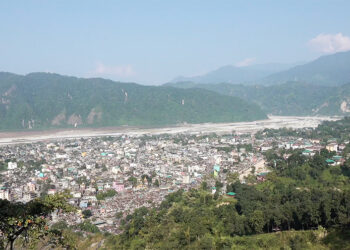
In the 13th Five-Year Plan, the government plans to construct 24 irrigation channels spanning 140 kilometres to address the shortage of irrigation water. The agriculture and livestock minister shared this during the National Assembly’s question-answer session today. Farmers in some parts of the country have been grappling with severe water shortage affecting paddy cultivation works, forcing some farmers to leave the fields fallow in some places.
The member of parliament from Lingmukha-Toedwang constituency in Punakha questioned the agriculture and livestock minister on the government’s irrigation water flagship programme. The MP said the shortage of irrigation water can affect the country’s food security and self-sufficiency goal.
“There are policies mandating the country to become food self-sufficient and work on food security to reduce food imports. However, I feel that there are no proper guidelines from the ministry to implement these policies. It is time to utilise pumps for paddy cultivation especially for fields near streams to address the shortage of irrigation water, which has become a recurring problem,” said Namgay Wangchuk, Lingmukha-Toedwang’s MP.
In response, the minister for agriculture and livestock outlined the government’s efforts and plans to address irrigation water shortage.
According to the minister, the government’s irrigation channels in the 13th Five Year Plan will cover around 4000 acres of land and benefit around 2700 households.
“We are not only going to focus on irrigation channels, it is also important to know how to manage water. That is why, through water-saving smart irrigation, we are going to research and distribute modern technologies such as water sprinklers. Similarly, during drought, we are planning to use solar and electric pumps. Additionally, for water management, we are planning to make ponds by distributing plastics and bentonite,” said Younten Phuntsho, Minister for Agriculture and Livestock.
In addition, the minister said that over the past five years, over 70 irrigation channels spanning more than 500 kilometres and covering over 14,000 acres of land have been established. The initiatives which also include the DeSuung National Service Water Project benefitted almost 8000 households across 20 districts.
According to the 2023 National Land Use Zoning report, there are more than 66,000 acres of fallow land in the country. In some places, the fields are left fallow due to shortage of irrigation water.
Deki Lhazom
Edited by








